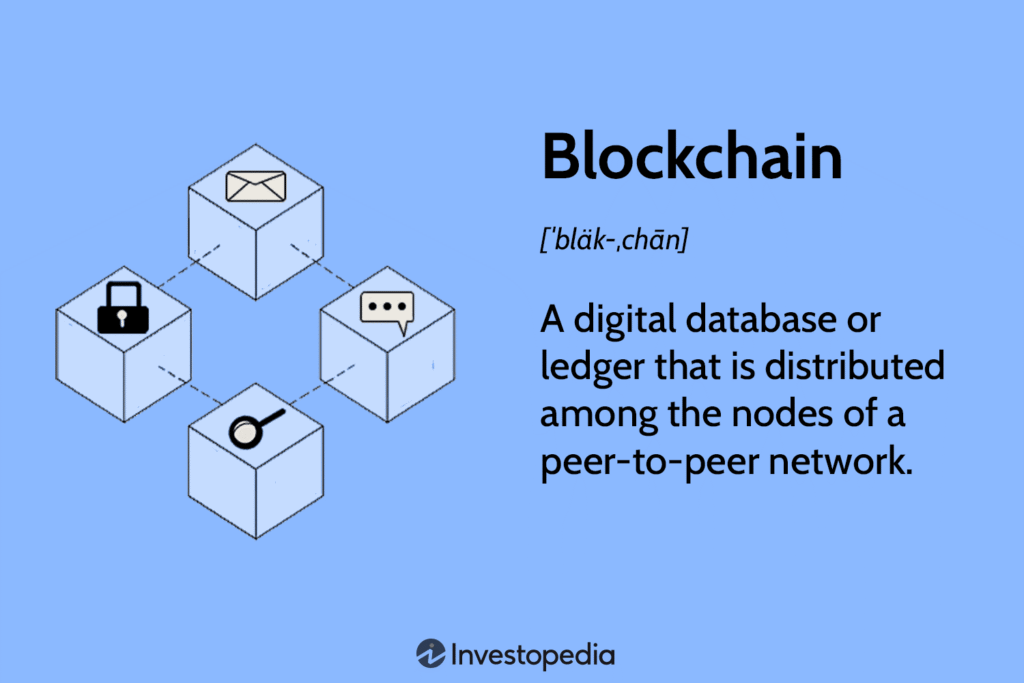Introduction to Bitcoin and Blockchain Technology
Bitcoin, created in 2009 by an anonymous person or group using the pseudonym Satoshi Nakamoto, is a decentralized digital currency that operates without a central authority or a single administrator. As a form of cryptocurrency, Bitcoin allows for peer-to-peer transactions over the internet, providing a means of securing financial transactions using cryptography. This innovative currency has gained significant prominence in recent years, particularly as interest in digital assets has surged and traditional financial systems have come under scrutiny.
One of the fundamental aspects that distinguish Bitcoin from conventional currencies is the underlying technology known as blockchain. A blockchain can be described as a distributed ledger that securely records all transactions across a network of computers. Unlike traditional databases that are controlled by a single entity, blockchain technology ensures transparency and eliminates the need for intermediaries by allowing all participants in the network to access and verify transaction records. This decentralized nature contributes to the security and integrity of Bitcoin transactions.
The significance of Bitcoin and blockchain technology in the digital market cannot be overstated. Bitcoin has emerged as both a store of value and a medium of exchange, attracting a diverse range of users, from those seeking investment opportunities to individuals in regions with unstable financial systems. Additionally, the open-source nature of blockchain technology allows for its application beyond cryptocurrency, fostering innovation in various sectors, including supply chain management, healthcare, and voting systems.
Overall, understanding Bitcoin and the principles of blockchain technology provides a foundation for appreciating the transformative potential of these digital advancements. As they continue to evolve, it is crucial for individuals and businesses alike to grasp the implications of adopting cryptocurrencies and the decentralized structures they promote.
How Bitcoin Blockchain Works

The Bitcoin blockchain functions as a distributed ledger, recording all transactions made with the cryptocurrency. At its core, it is composed of a series of blocks linked together in chronological order. Each block contains a group of verified transactions, a timestamp, and a unique hash that connects it to the previous block, forming an immutable chain. This structure ensures that once a block is added to the blockchain, the information it contains cannot be altered without the consensus of the network, thereby providing security and transparency.
Transactions are initiated by users when they send or receive Bitcoin. For a transaction to be validated, it must be confirmed by a network of nodes, which are computers that participate in the Bitcoin network. These nodes maintain the blockchain and ensure that all transactions comply with the established consensus rules. Once a transaction is verified, it is grouped with others into a new block.
Miners play a crucial role in the operation of the Bitcoin blockchain. They utilize powerful computers to solve complex cryptographic puzzles, a process known as proof of work. Successfully solving these puzzles allows miners to add new blocks to the blockchain, thereby validating the transactions contained within. As a reward for their efforts, miners receive newly minted bitcoins and transaction fees paid by users. This incentivizes them to maintain the integrity of the network.
The decentralized nature of the Bitcoin blockchain eliminates the need for a central authority or intermediary, creating a system where trust is established through transparency and verification. Each node within the network holds a copy of the entire blockchain, making it nearly impossible for any single entity to manipulate the system. Consequently, the Bitcoin blockchain exemplifies a revolutionary approach to digital transactions, securing both user information and transaction history effectively.
The Role of Miners in the Bitcoin Ecosystem
Miners play an essential role in the Bitcoin ecosystem, performing the critical function of maintaining the integrity and ongoing operation of the Bitcoin blockchain. At its core, mining involves the validation of transactions while also securing the network against attacks. This process is executed through a technique known as Proof of Work, which requires miners to solve complex mathematical problems. Upon successfully solving these problems, miners can add a new block of transactions to the blockchain, facilitating the continued operation of the decentralized network.
Transaction validation is paramount to the security and reliability of Bitcoin. Every transaction that occurs on the blockchain needs to be verified to prevent double-spending and ensure that the digital currency retains its value. When miners validate a transaction, they confirm that the sender possesses the necessary funds and that the transaction adheres to the network’s protocols. This decentralized validation system helps consolidate trust within the community, as there is no single point of control or failure.
In exchange for their efforts, miners are incentivized by rewards in the form of newly minted bitcoins, known as the block reward. As of October 2023, this reward stands at 6.25 bitcoins per block, a value that is halved approximately every four years. This mechanism not only encourages miners to continue contributing to the network but also introduces a controlled supply of bitcoins, ensuring scarcity and potentially enhancing their value over time. However, it is important to recognize the environmental concerns associated with mining activities, particularly in terms of energy consumption. Mining operations often require significant electrical resources, leading to discussions about sustainability and the balance between technological advancement and ecological responsibility in the cryptocurrency space.
Advantages of Using Bitcoin Blockchain
The Bitcoin blockchain offers several key advantages that contribute to its reputation as a secure and trustworthy medium for financial transactions. One of the foremost benefits is its robust security features. The underlying technology employs advanced cryptographic techniques to secure transactions, making it extremely difficult for malicious parties to alter the transaction data. This level of protection ensures that user funds remain safe from cyber threats and other forms of fraud, which is particularly important in an era where digital vulnerabilities are rampant.
Another significant advantage of the Bitcoin blockchain is its transparency. Every transaction is recorded on a public ledger, allowing users to verify and track transactions in real-time. This transparency fosters trust among users, as anyone can access the blockchain to confirm transaction details without relying on intermediaries. As a decentralized network, the Bitcoin blockchain eliminates the need for a central authority, reducing the risk of manipulation and corruption often associated with traditional financial systems.
Furthermore, the immutability of the Bitcoin blockchain enhances its reliability. Once a transaction is confirmed and recorded, it cannot be altered or deleted, which helps to prevent double spending and ensures the integrity of transactional data. This characteristic of immutability is vital for businesses and individuals alike, as it upholds a consistent and trustworthy transactional history, encourages compliance with regulations, and supports audit trails.
As a result of these advantages, the adoption of Bitcoin blockchain technology is growing across various sectors, including finance, supply chain management, and even voting systems. With its security, transparency, and immutability, Bitcoin remains at the forefront of cryptocurrency innovation, empowering users to engage in financial transactions with confidence and reliability.”
Challenges and Limitations of Bitcoin Blockchain
The Bitcoin blockchain, while revolutionary, faces several significant challenges and limitations that hinder its full potential as a digital currency. One of the primary issues is scalability. The Bitcoin network can process only a limited number of transactions per second, approximately seven, which is significantly lower compared to traditional payment systems like Visa, which can handle thousands. This limitation leads to congestion during peak times, resulting in delayed transaction confirmations and increased fees, as users compete to have their transactions prioritized by miners.
Transaction speed is another critical concern. The process of adding new blocks to the Bitcoin blockchain occurs approximately every ten minutes. While this may not seem long, it can result in slower transaction times, particularly during periods of high activity. When users experience longer wait times for transaction confirmations, it can diminish the practical usability of Bitcoin for everyday transactions, thus undermining its promise as an alternative to traditional currency systems.
Energy consumption is yet another significant challenge. The process of mining Bitcoin requires substantial computational power, consuming vast amounts of electricity. This energy-intensive nature of Bitcoin mining has raised environmental concerns and sparked debates about the sustainability of the network. Critics argue that this excessive energy usage may be detrimental to global efforts aimed at combating climate change, urging the need for more eco-friendly alternatives.
Lastly, regulatory challenges persist, as governments and regulatory bodies remain cautious about cryptocurrency. The decentralized nature of Bitcoin poses hurdles in terms of regulation and oversight, leading to ongoing concerns about its potential use in illegal activities such as money laundering and tax evasion. These concerns prompt some governments to develop stringent regulatory frameworks or consider bans, which may further complicate the integration of Bitcoin into the mainstream financial system.
The Future of Bitcoin Blockchain Technology

The Bitcoin blockchain has established itself as a foundational technology for the cryptocurrency landscape. As we look toward the future, several key advancements are expected to reshape this dynamic ecosystem. One of the most significant developments includes scalability solutions that aim to enhance transaction throughput. The Lightning Network, a second-layer solution designed to facilitate faster transactions, plays a crucial role in addressing existing scalability challenges. This technology enables users to conduct off-chain transactions while maintaining the security and integrity of the Bitcoin network, thereby reducing congestion and transaction fees.
In addition to scalability improvements, advancements in mining technology are on the horizon. As environmental concerns grow, the industry is witnessing a shift toward more sustainable practices. Innovations such as the use of renewable energy sources and more efficient mining hardware could pave the way for a greener Bitcoin blockchain. These changes not only address ecological issues but also promote the longevity and acceptability of Bitcoin among a broader audience.
Furthermore, the potential integration of Bitcoin into mainstream financial systems cannot be overlooked. Financial institutions are beginning to explore Bitcoin blockchain for cross-border transactions and remittances, acknowledging its advantages over traditional banking systems in terms of speed and cost. As Bitcoin continues to gain acceptance, regulatory frameworks may evolve to encompass this digital currency, offering clearer guidelines for its use and helping to foster innovation while ensuring protection for consumers.
The future of Bitcoin blockchain technology appears optimistic, driven by the quest for scalability, sustainable mining practices, and greater financial integration. Each of these elements could contribute to the establishment of Bitcoin as a fundamental component of the global financial infrastructure, facilitating wider adoption and utilization.
Real-World Applications of Bitcoin Blockchain
The Bitcoin blockchain, originally developed to support cryptocurrency transactions, has demonstrated remarkable versatility, extending its influence into various sectors beyond digital currency. One of the most promising applications is in supply chain management. The immutable nature of the blockchain ensures that all transactions are recorded securely and transparently, allowing stakeholders to trace products from origin to end-user. This increased transparency can help reduce fraud, enhance safety, and improve compliance with regulatory requirements. Many companies are already implementing blockchain solutions to track goods, verify authenticity, and streamline operations.
Another notable utilization of Bitcoin blockchain technology lies in digital identity verification. In an increasingly digital world, the need for secure identity management has never been greater. Blockchain allows individuals to control their own identity data, reducing the risk of identity theft while enabling frictionless verification processes. For instance, institutions can verify credentials or background checks through a secure, decentralized ledger, thereby expediting typical processes that are often cumbersome and inefficient.
Moreover, the application of Bitcoin blockchain in remittances is revolutionizing cross-border payments. Due to the high fees and long processing times associated with traditional banking systems, many individuals, particularly in developing countries, find it challenging to send money internationally. Blockchain technology enables instantaneous transactions with minimal fees, facilitating a more affordable and accessible way to send remittances to family or businesses abroad. This ability to transfer value efficiently has the potential to impact the financial wellbeing of millions, particularly in regions underserved by conventional banking infrastructures.
These diverse applications of Bitcoin blockchain illustrate not only its transformative potential but also the broad array of industries that stand to benefit from this innovative technology, signifying a shift in how businesses may operate in the future.
Comparative Analysis: Bitcoin Blockchain vs. Other Blockchains
The Bitcoin blockchain, launched in 2009, stands as the pioneering platform for cryptocurrency, introducing the world to decentralized digital currency. However, it is essential to contrast its functionalities with other notable blockchain networks, such as Ethereum and Ripple, to appreciate its unique role within the blockchain ecosystem.
Primarily, Bitcoin was designed to serve as a peer-to-peer electronic cash system, enabling secure, transparent transactions devoid of intermediaries. It focuses on being a store of value as well as a medium of exchange. On the other hand, the Ethereum blockchain, launched in 2015, was created to facilitate smart contracts and decentralized applications (dApps). This differentiates Ethereum from Bitcoin, as its primary purpose is not merely the transfer of currency but the execution of programmable contracts, broadening its use cases significantly beyond financial transactions.
In contrast, Ripple, established in 2012, is tailored specifically for real-time cross-border payment solutions. Its blockchain technology is optimized for speed and efficiency in transferring currency across borders. Ripple’s protocol allows for instant settlement and low-cost remittances, targeting financial institutions and banks, positioning it distinctly from both Bitcoin and Ethereum.
Technologically, the Bitcoin blockchain relies on a proof-of-work consensus mechanism, which ensures network security through computational power. However, this method is often criticized for its energy consumption. Ethereum, while initially using a similar proof-of-work approach, plans to transition to a proof-of-stake model, enhancing energy efficiency and scalability. Ripple, meanwhile, utilizes a unique consensus algorithm that allows for faster transaction times and greater transaction throughput compared to Bitcoin.
In conclusion, while Bitcoin’s blockchain remains the original and most recognized, Ethereum and Ripple represent alternative uses of blockchain technology. Each network serves distinct purposes, catering to various sectors within the cryptocurrency landscape. This analysis sheds light on the strengths and weaknesses of Bitcoin relative to emerging blockchain technologies, demonstrating its continued importance in the digital financial world.
Conclusion: The Importance of Bitcoin Blockchain in Today’s World
In recent years, the Bitcoin blockchain has emerged as a revolutionary force within the financial sector, reshaping the way we perceive and conduct transactions. As a decentralized ledger technology, it serves as the backbone of the cryptocurrency ecosystem, providing transparency, security, and efficiency. Through its innovative structure, the Bitcoin blockchain enables peer-to-peer transactions without the need for intermediaries, thereby lowering costs and increasing accessibility for users worldwide. This characteristic is particularly significant in a global economy where traditional banking systems often exclude vast populations from participating in financial activities.
The implications of the Bitcoin blockchain extend beyond mere financial transactions; they touch upon the broader spectrum of global economics. As more individuals and institutions recognize the value of cryptocurrencies and blockchain technology, we may witness a paradigm shift in payment systems, investment strategies, and economic resiliency. The potential for borderless transactions invites new opportunities for trade and commerce, enabling businesses to operate more fluidly across geographies. This transformation may also foster innovation and entrepreneurship in developing regions, empowering individuals to leverage blockchain as a gateway to economic advancement.
As the landscape of cryptocurrency continues to evolve, it is crucial for stakeholders—both individual and institutional—to stay informed about the latest developments in the Bitcoin blockchain. Understanding its mechanics, challenges, and potential can equip participants to navigate this complex yet promising domain effectively. Engaging with ongoing discourse will not only enhance one’s own knowledge but may also contribute to the collective understanding of how blockchain technology can be utilized for the greater good.
In conclusion, the Bitcoin blockchain holds significant promise for redefining systems of value exchange and reshaping the future of global financial systems. Its transformative potential warrants careful attention as we move towards an increasingly digital economy.
